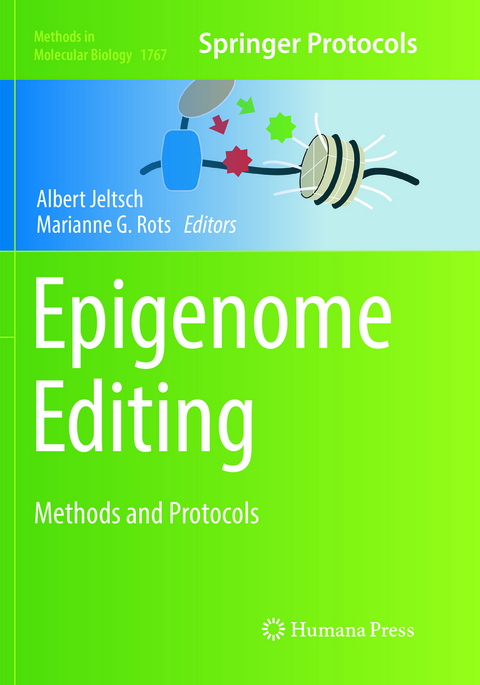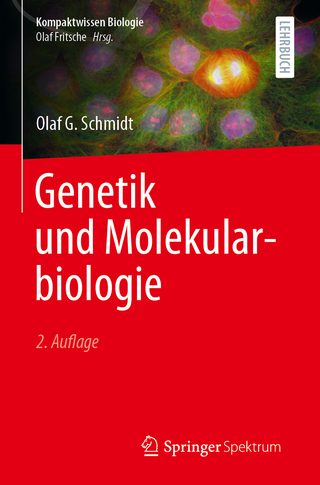
Epigenome Editing
Humana Press Inc. (Verlag)
978-1-4939-9281-2 (ISBN)
Authoritative and practical, Epigenome Editing: Methods and Protocols will be of great assistance to people new to the field but also to those already engaged, as epigenetic editing is still a relatively unexplored field with many issues to be resolved.
Editing the Epigenome: Overview, Open Questions, and Directions of Future Development.- Zinc Fingers, TALEs and CRISPR Systems: A Comparison of Tools for Epigenome Editing.- Designing Epigenome Editors: Considerations of Biochemical and Locus Specificities.- Generation of TALE-Based Designer Epigenome Modifiers.- Neuroepigenetic Editing.- Allele-Specific Epigenome Editing.- Key to Delivery: The (Epi-)Genome Editing Vector Toolbox.- CRISPR/dCas9 Switch Systems for Temporal Transcriptional Control.- Delivery of Designer Epigenome Modifiers into Primary Human T Cells.- Viral Expression of Epigenome Editing Tools in Rodent Brain Using Stereotaxic Surgery Techniques.- Stable Expression of Epigenome Editors Via Viral Delivery and Genomic Integration.- Purified-Protein Delivery to Activate an Epigenetically-Silenced Allele in Mouse Brain.- Non-Viral Methodology for Efficient Co-Transfection.- Chromatin Immunoprecipitation in Human and Yeast Cells.- Chromatin Immunoprecipitation and High Throughput Sequencing (ChIP-Seq): Tips and Tricks Regarding the Laboratory Protocol and Initial Downstream Data Analysis.- Generation of Whole Genome Bisulfite Sequencing Libraries for Comprehensive DNA Methylome Analysis.- Approaches for the Analysis and Interpretation of Whole Genome Bisulfite Sequencing Data.- Whole Genome Bisulfite Sequencing for the Analysis of Genome-Wide DNA Methylation and Hydroxymethylation Patterns at Single-Nucleotide Resolution.- Locus-Specific DNA Methylation Analysis by Targeted Deep Bisulfite Sequencing.- DNA Methylation Analysis by Bisulfite Conversion Coupled to Double Multiplexed Amplicon-Based Next-Generation Sequencing (NGS).- Cell-to-Cell Transcription Variability as Measured by Single Molecule RNA FISH to Detect Epigenetic State Switching.- Establishment of Cell Lines Stably Expressing dCas-Fusions to Address Kinetics of Epigenetic Editing.- Editing of DNA Methylation Using dCas9-Peptide Repeat and scFv-TET1 Catalytic Domain Fusions.- Chemical Inducible dCas9-Guided Editing of H3K27 Acetylation in Mammalian Cells.- Screening Regulatory Element Function with CRISPR/Cas9-Based Epigenome Editing.
| Erscheinungsdatum | 20.05.2019 |
|---|---|
| Reihe/Serie | Methods in Molecular Biology ; 1767 |
| Zusatzinfo | 69 Illustrations, color; 14 Illustrations, black and white; XIV, 482 p. 83 illus., 69 illus. in color. |
| Verlagsort | Totowa, NJ |
| Sprache | englisch |
| Maße | 178 x 254 mm |
| Themenwelt | Medizin / Pharmazie ► Medizinische Fachgebiete |
| Studium ► 2. Studienabschnitt (Klinik) ► Humangenetik | |
| Schlagworte | CRISPR • dCas9 • DNA-binding device • EpiEditors • Epigenome reprogramming • Histone protein modifications |
| ISBN-10 | 1-4939-9281-3 / 1493992813 |
| ISBN-13 | 978-1-4939-9281-2 / 9781493992812 |
| Zustand | Neuware |
| Haben Sie eine Frage zum Produkt? |
aus dem Bereich


